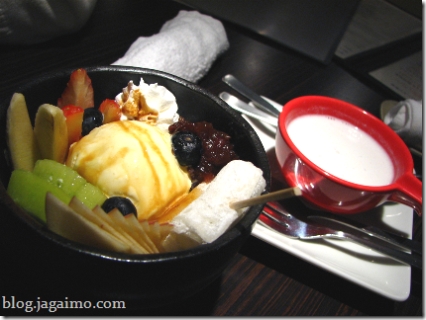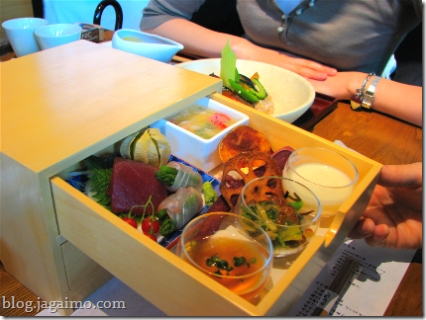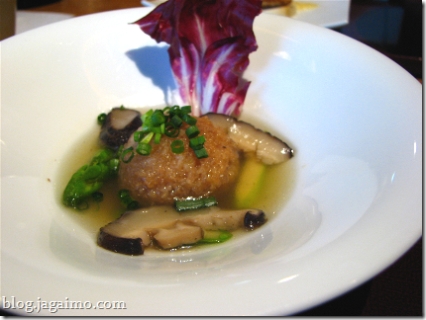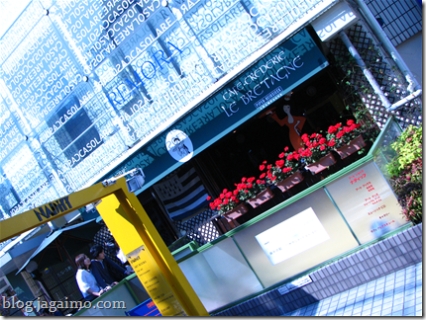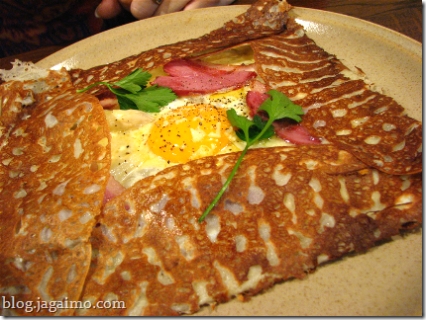I don't think you can say you've truly confronted your own mortality until you've been buried alive in volcanically heated sand.
When Hiromi and I discussed our plans for this trip to Japan, I mentioned I'd like to go to an onsen in Kagoshima, but I am fairly certain I never suggested that we should go to the beach and have some late-middle-aged sadists bury us.
Vacations don't always go the way you envisioned them, of course. Yet, it's important not to close your mind to possibilities outside of the realm of your narrow experience. And, I'd say partly thanks to the limitations of my Japanese ability, I barely understood what I was in for, so I only experienced a surmountable bit of trepidation.
We were at Ibusuki, Kagoshima. Sane people take an airplane here, but after years of building my Japan itineraries one to three weeks in roughly the same place, interrupted by one or two short side trips, Hiromi and I elected to get a rail pass and see Japan like we're tourists. We took a 6-7 hour train ride from Tokyo to Fukuoka last Thursday, where we focused primarily on eating and sleeping (Fukuoka has other things to recommend it, but is a fine location for both purposes), before continuing on to our potential demise several hours further south.
We arrived at Hotel Shusuien Friday night at 6:30. This particular ryokan has consistently won awards naming its food the best in Japan (18 years running) from a ryokan-focused magazine, which we only knew a few days after Hiromi chose it. More on that later; I'll I show off what we ate in a subsequent post.
The staff suggested we try out the sand baths, and offered to start our dinner at an unusually late 8 pm. Most ryokan are nearly ready turn in for the night by this time, so we were pleased with the option. Hiromi looked forward to a quick sunamushi bath.
I didn't quite understand what was going on, but I did learn that most people can only stand 10-15 minutes of whatever we were about to do, and that if we couldn't endure it, we should shake our hips a bit. She demonstrated.
If you've never seen a 70 year-old Japanese obaachan demonstrate shaking her hips in a ryokan uniform-style kimono, it's a gesture which implants itself disturbingly deep in your psyche.
So on to the burial.
We had changed into the hotel's yukata, so we were presented with zouri and were shuttled by car a short stretch away.
On arrival, we presented a coupon from our hotel, and were provided with another yukata, into which we were advised to change. We followed signs that led us out to the beach, where we discovered a number of people already in the mummified state.
Staffed by two 60-something interrers bearing wide shovels, the sand baths occupy a long strip of land 30 meters or so from the water. Each bath is wide enough to support about 4 persons abreast, and 2 lengthwise.
The female attendant briefly explained to Hiromi how to position herself. My height and clumsiness presented a few logistical challenges, so the male attendant spent a bit more time guiding me into just the right position. They dig out a spot roughly based on the size of their typical customers, but with a little finesse, it works for everyone.
Once positioned, we are quickly buried. The attendants alternately dig, then drop hot sand over us. Dressed in simple yukata, head partially covered by a small towel, we are fully clothed, but somehow more vulnerable than we would be in a regular onsen or sentou.
After about 60 seconds underneath a pile of hot sand, you feel piercing heat on your naked extremities, the hands and feet. The rest of your body notices little more than the weight of the sand covering you, save for a hint of steam. After two or three minutes, you start to become incredibly conscious of your heartbeat. Every thump of your heart pushes the sand an inch higher, and yet it hasn't moved at all.
Your breathing necessarily slows as some kind of survival mechanism, even though the first impulse is to breathe more heavily. The ribcage actually does move; if you look at the person next to you, you will see that the sand rises and crests rhythmically.
After five minutes or so, your face becomes covered in sweat, and deeply red. Perhaps you feel the urge to shake your hips.
Seven or eight minutes into the burial, you cease to fight the improbability of your circumstances, and you are strangely relaxed.
And yet, after 10-12 minutes, you feel a slight discomfort again, and your toes and fingers want to find their way to the surface. You shake your hips, just as the obaachan instructed.
First, your toes emerge, and the ocean breeze against newly exposed skin makes the heat bearable again. Then, your hands are free, and you gain just a bit more energy.
But, barring some irrational competitive urge, you will last no more than 15 minutes. Any more would be too close to cheating death. You find a way to rise out from the sand, somewhat zombie-like at first, until you realize that you are still a mortal entity and that yes, in spite of your yukata, the sand has indeed made its way into every crevice of your body imaginable.
You retire to the shower, where you spend more effort than customarily needed to wash yourself, and take a brief dip in the onsen bath before returning to the ryokan for dinner.
You feel inexplicably refreshed.
You are still alive, and you have an extravagant dinner awaiting you.
Technorati Tags: sunamushi,Kagoshima,Ibusuki,Japan,onsen,travel,sand baths











